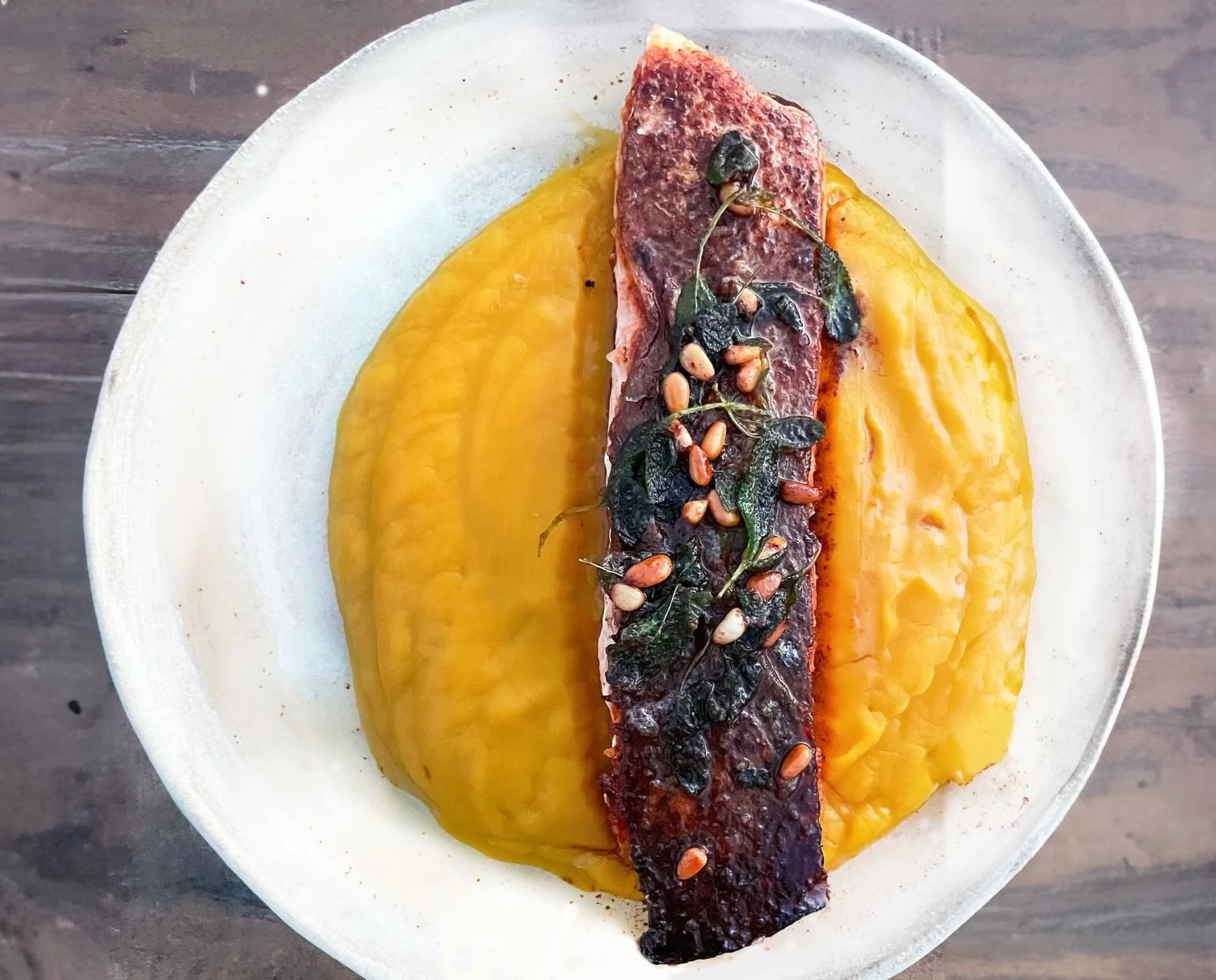Salmon with Burnt Butter, Sage, and Pumpkin Purée
40 Minutes
〰️
40 Minutes 〰️
Serves 2
Ingredients
Pumpkin Purée:
1 small pumpkin or butternut squash, peeled, seeded, and cubed
2 tablespoons olive oil
Salt and pepper, to taste
Salmon:
2 salmon fillets, skin-on
Salt and pepper, to season
2 tablespoons olive oil
Burnt Butter, Sage, and Pine Nuts:
4 tablespoons salted butter (use vegan butter for a dairy-free option)
A handful of fresh sage leaves
2 tablespoons pine nuts
Method
Prepare the Pumpkin Purée: Preheat your oven to 200°C / 400°F . Toss the pumpkin cubes with olive oil, salt, and pepper. Spread them on a baking sheet and roast for 25-30 minutes or until tender and caramelized. Transfer the roasted pumpkin to a blender or food processor, add a generous pinch of salt and pepper. Blend until smooth and creamy, adding a little milk of choice (or water) if necessary to thin it out. Adjust seasoning to taste. Keep warm with tin foil.
Cook the Salmon: Season the salmon fillets with salt and pepper. Heat olive oil in a skillet over medium-high heat. Once hot, place the salmon skin-side down. Cook for 4-5 minutes or until the skin is crispy. Gently flip the fillets and cook for an additional 2-3 minutes or until desired doneness. Remove from the skillet and set aside.
Make the Burnt Butter, Sage, and Pine Nuts: In the same skillet, melt the butter over medium heat. Add the sage leaves and pine nuts. Cook, stirring continuously, until the butter starts to brown, the sage becomes crispy, and the pine nuts are toasted, about 2-3 minutes. Be careful not to overly burn the butter, you’re looking for a golden brown colour.
Assemble the Dish: Scoop and smear some pumpkin purée on two plates, creating a bed for the salmon. Place the crispy skin salmon on top of the pumpkin purée. Spoon the burnt butter, sage, and pine nuts over the salmon.
Notes
To achieve crispy skin, it all comes down to how dry you can get the fish skin before you cook it. I always pat it dry with some paper towel and then, using my knife, run the blade diagonally along the skin, scraping off any last moisture. Another trick is to use a fish weight or weighted object like another pan to keep the fish skin pushed firmly and lately against the hot pan. To do this, place the fillet skin side down in the pan, cover it with a piece of parchment paper and then add a weight on top for the first 3 minutes of cooking.

